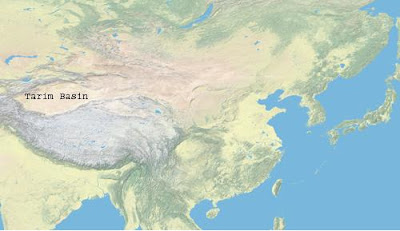Kemalism and global modernization
Today I attended another talk, this one about Central Asia, given by M. Sukru Hanioglu of Princeton University titled “Turkey and the West: The Kemalist Westernization, 1923-1938.” For those unfamiliar with Turkey, Kemalist ideology is most basically the thought that Turkey should Westernize and have no state religion. Background information and contemporary analysis and can be found on wikipedia here and from foreign affairs here, respectively.
The talk was a re-examination of Kemalism. At the independence, it was not enough to make Turkish people want to become more European. “Civilization at that time was European civilization.” Islam was not a part of Western ideas.
Mustafa Kemal Ataturk, after whom Kemalism is named, was the progressive who began to reform Turkish society and politics, and eventually became the first Turkish president.
Islamic Law v.s. Secular Law
A new penal code was written, which gave women theoretical unprecedented freedom. This was a major point of political debate. Women and men now had equal political status within the country – something unprecedented in the region. Another example was the Hat Law of 1925, which required officials to don apparel that did not indicate a particular religious affiliation.
Language
These changes stretched from modern infrastructure development to a new constitution to implementing a newer, Latin alphabet for Turkish. This alphabet would be the grounds of tremendous dispute. A few years later, this reform was challenged with an Islamic fatwa, backed by conservative opposition. Turkey had adopted a new alphabet, however, which fundamentally changed the way education, government, and business would be conducted, as neighboring countries still employed and Arabic script.
Music and Art Reform
New music pieces were composed and performed with both Western and Turkic themes and ideas. Traditional and nationalistic Turkic music was to be made into international music. Paul Hindemith was a notable composer who helped make this a reality.
The concluding statement acknowledged Mustafa Kemal Ataturk as a revolutionary idealist who instituted very successful reforms to make Turkey more European, Europe did not embrace Turkey and its attempt to modernize and westernize.
One of the interesting questions asked following the discussion was whether or not Turkey might become a more prominent leader in the Middle East Region as a modern, more secular nation. Professor Hanioglu said that the state is such a leader and argued that the state should actually control religion to an extent.
Another point was brought up about constructing the idea of making Turkey more “modern” and westernized. There are lots of overlapping but not necessarily synonymous terms, such as the West, Europe, the “civilized world,” and the “international,” all terms that are seemingly used interchangeably by figures in Turkish history. Russia and Japan were mentioned as two other countries that westernized and modernized at about the same time as Turkey. These leaders, Peter the Great and Emperor Meiji, prior to WWI, experienced many of the same problems and difficulties in modernizing their respective countries both socially and politically. These three countries were transformed from pre-industrial, and in the case of Japan, even feudal, into modern world powers by the time of WWI.
The presentation was at 5:00PM in Room 231 of Fisher-Bennett Hall at the University of Pennsylvania and sponsored by the Middle East Center, History Department, and Department of Near Eastern Languages and Civilizations.
F. Miller SAS ‘13

Comments
Post a Comment
We follow the House Rules as outlined by the BBC here.